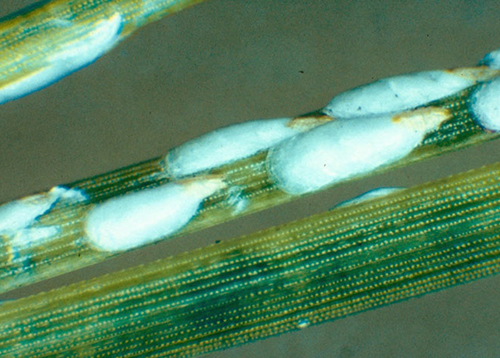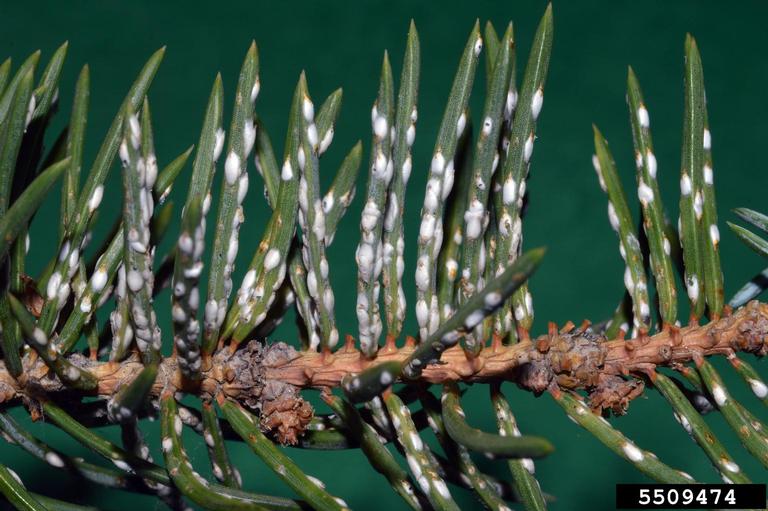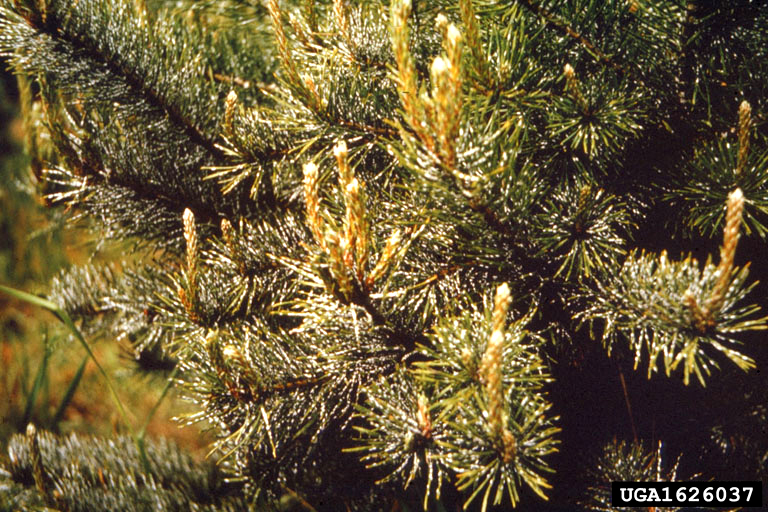Integrated Pest Management
Pine Needle Scale
Chionaspis pinifoliae
Pest Description
- females: 1/16 – 1/8 inch; white; yellowish spot at one end
- males: similar to females but smaller and narrower
- immatures: crawlers (mobile stage) 3/64 inch; yellowish orange; no wings
- immatures: nymphs (sessile stage) resemble adults, but are smaller
Host Plants, Diet & Damage
- pine (especially mugo, Austrian and Scotch); spruce; fir; Douglas-fir
- feed on sap from needles
- needles may initially be spotted yellow, turning to brown
- needle, branch and canopy dieback may occur
- heavily infested trees appear frosted
- serious infestations can cause tree death
Biology, Life Cycle & Damaging Life Stage
- overwinter as reddish eggs under the female’s cap
- crawlers present from early-May to early-June
- males and females both form scale coverings and remain stationary; males become mobile prior to mating
- second generation crawlers present late-July through August
- two generations per year
- nymphs and adults are the damaging stages
IPM Recommendations
- Keep trees healthy.
- Monitor scale crawlers from early-May to early-June and in late-July using double sided tape wrapped around twigs.
- Apply horticultural oil to smother scales or scale crawlers when monitoring indicates crawlers are present.
- Apply a systemic dinotefuran soil drench, granules or bark band in early-May.
- Imidacloprid is ineffective against hard scales.




